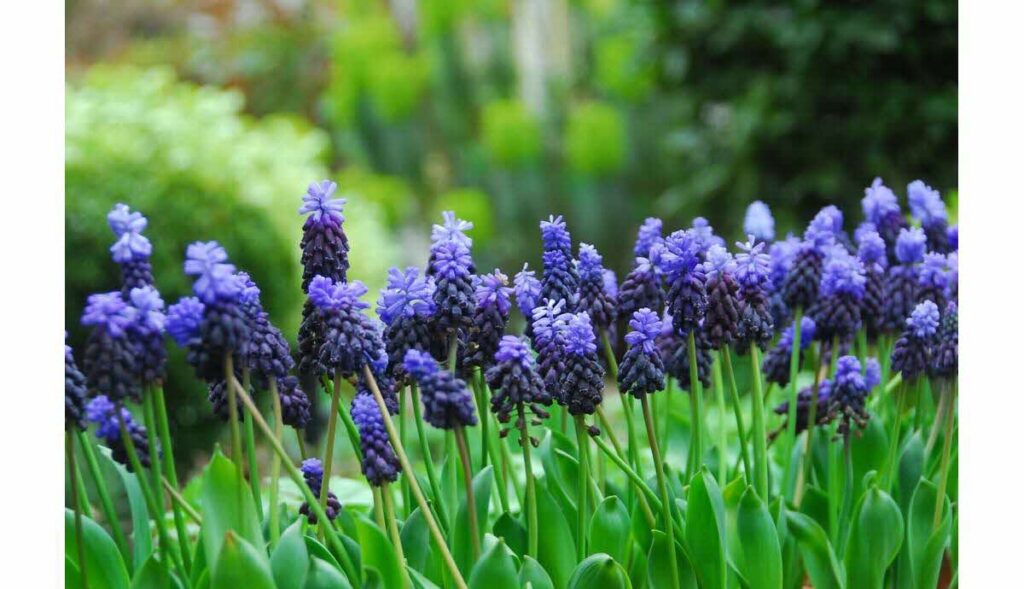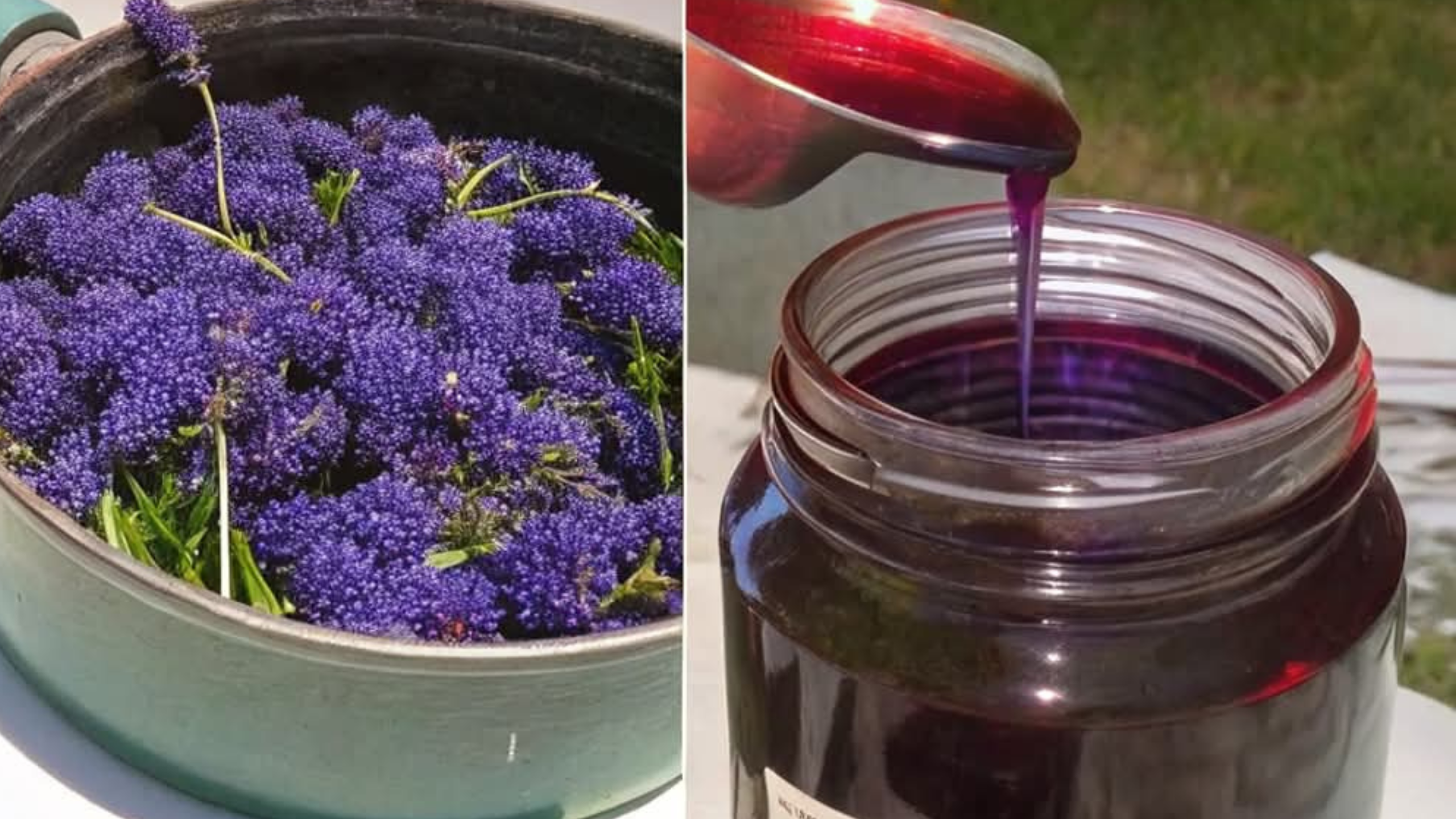Grape hyacinths (Muscari spp.) may be small in size, but don’t underestimate their impact. These vibrant, bell-shaped flowers—most often seen in shades of blue and purple—are more than just a visual delight in spring gardens. With their rich cultural symbolism, ecological advantages, and surprising versatility, grape hyacinths are a smart addition to any garden or indoor space.
Whether you’re an experienced gardener or just starting out, understanding the full potential of these charming flowers can help you make the most of their beauty and benefits.
A Natural Pollinator Magnet
One of the standout features of grape hyacinths is their early bloom time. Appearing as soon as winter fades, they provide an essential source of nectar for pollinators like bees and butterflies—creatures that often struggle to find food in early spring.
This early bloom not only supports local biodiversity but also encourages a healthier garden ecosystem. With pollinators drawn in by the hyacinths, nearby plants benefit from improved cross-pollination, leading to stronger, more productive growth.
Easy to Grow and Maintain
Grape hyacinths are among the easiest flowering bulbs to grow. They thrive in a range of soil types and weather conditions and are both drought-tolerant and deer-resistant—two major advantages for low-maintenance gardening.

Once planted, they naturalize quickly, meaning they spread and come back stronger year after year without needing replanting. Their compact size and vivid color make them perfect for borders, rock gardens, and under trees or shrubs.
If you’ve been hesitant to try bulbs, grape hyacinths are a forgiving and rewarding place to start.
Emerging Research: Antioxidant Potential
Although grape hyacinths are not commonly used in modern herbal medicine, emerging studies suggest that some species within the Muscari genus may contain antioxidant compounds. These are substances that help neutralize harmful free radicals in the body, which can contribute to aging and disease.
In traditional Mediterranean herbal practices, extracts of grape hyacinth were occasionally used for their calming and detoxifying properties. While the modern scientific evidence is still developing, it’s an area of growing interest for natural health researchers.
Still, it’s essential to note: these plants are not considered edible or medicinal by mainstream standards. Always consult a qualified health practitioner before using any plant therapeutically.
Symbolism and Cultural Meaning
In the Victorian language of flowers, grape hyacinths symbolize rebirth, trust, and constancy. Because they bloom so early in the year, they are often seen as a sign of new beginnings and the resilience of nature.
This symbolic value makes them popular for springtime celebrations, weddings, and spiritual gardens. If you’re looking to add deeper meaning to your garden or floral arrangements, grape hyacinths are an elegant and thoughtful choice.
Perfect Companions in the Garden
Grape hyacinths pair beautifully with other early spring bloomers such as tulips, daffodils, and crocuses. Their low height and dense flower clusters provide contrast and depth, making garden beds pop with layered colors.
Additionally, their growth habit helps to suppress weeds and cover bare patches of soil—an aesthetic and functional bonus for any flower bed. When used strategically, they can enhance the beauty and health of your entire garden.
Bring Spring Indoors with Forcing
You don’t have to wait until spring to enjoy the beauty of grape hyacinths. These bulbs can be “forced” to bloom indoors during the winter. After chilling them in the refrigerator for 10 to 12 weeks, simply pot them up and place them in a warm, sunny spot.
The result? A delightful burst of color and fragrance that brightens your home even in the darkest months. It’s a great way to lift your spirits and bring a touch of the outdoors inside.
Modest Air-Purifying Benefits
Like most green plants, grape hyacinths can offer minor air-purifying benefits when grown indoors. They contribute to better indoor air quality by producing oxygen and may help filter certain airborne toxins.
While their impact isn’t as well-documented as some other houseplants, they still serve as a lovely, living addition to your interior space.
A Word on Naturalizing
One of the more unique qualities of grape hyacinths is their ability to naturalize. This means they will multiply over time, spreading to fill in larger areas if left undisturbed. This trait can be an advantage when trying to create a colorful spring ground cover.
However, some gardeners may find their spread too aggressive in small, controlled beds. If that’s a concern, consider planting them in containers or well-bordered spaces to manage their growth.
Final Thoughts
Grape hyacinths are proof that big things come in small packages. They’re not just a pretty face in the flower world—they’re pollinator-friendly, easy to grow, symbolically rich, and versatile in both garden and indoor settings.
Whether you’re planting them for their vibrant color, their contribution to the ecosystem, or their symbolic value, grape hyacinths deliver far more than meets the eye.

